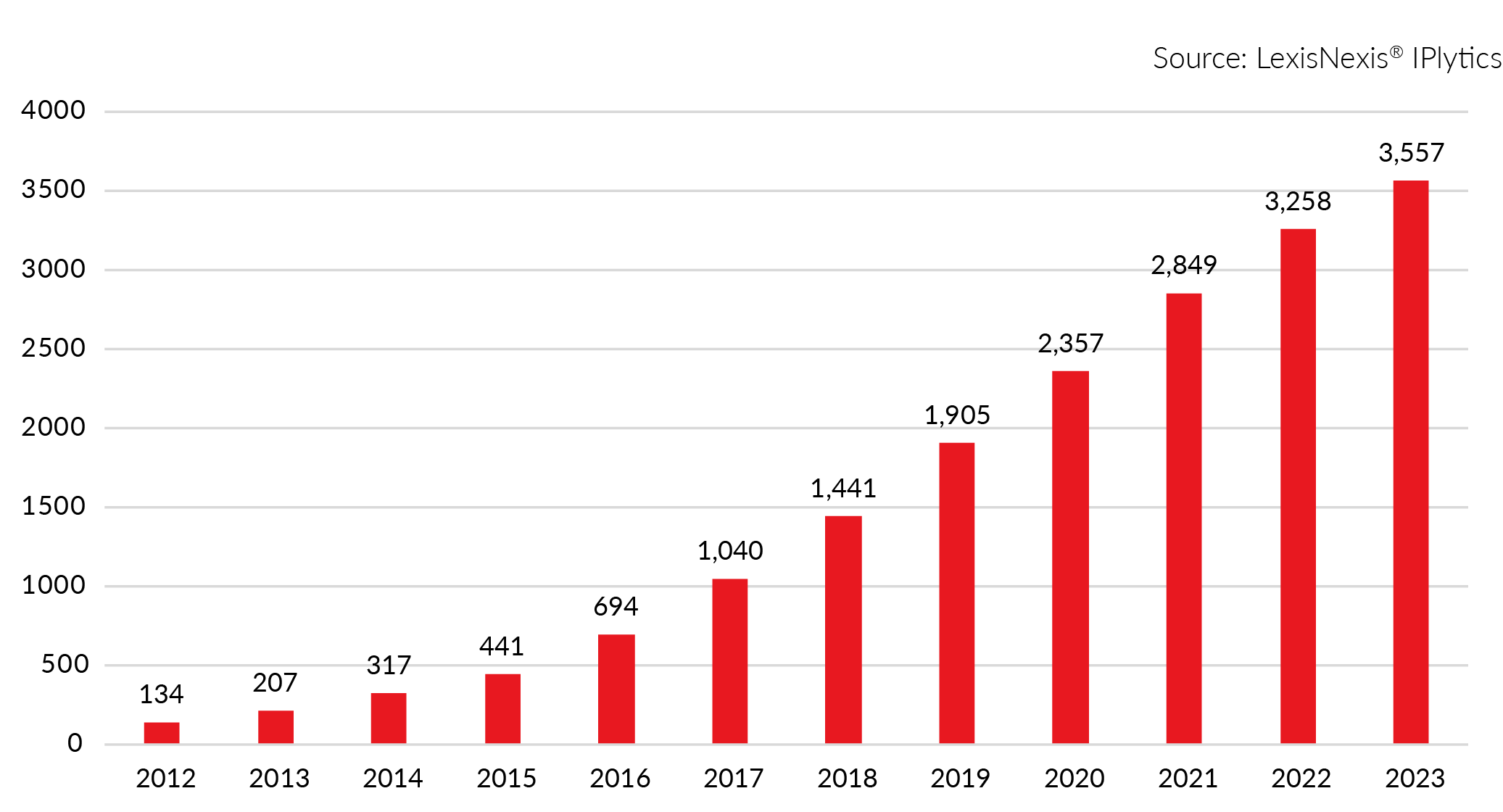Who Leads the Qi Wireless Charging Patent Race?
2024
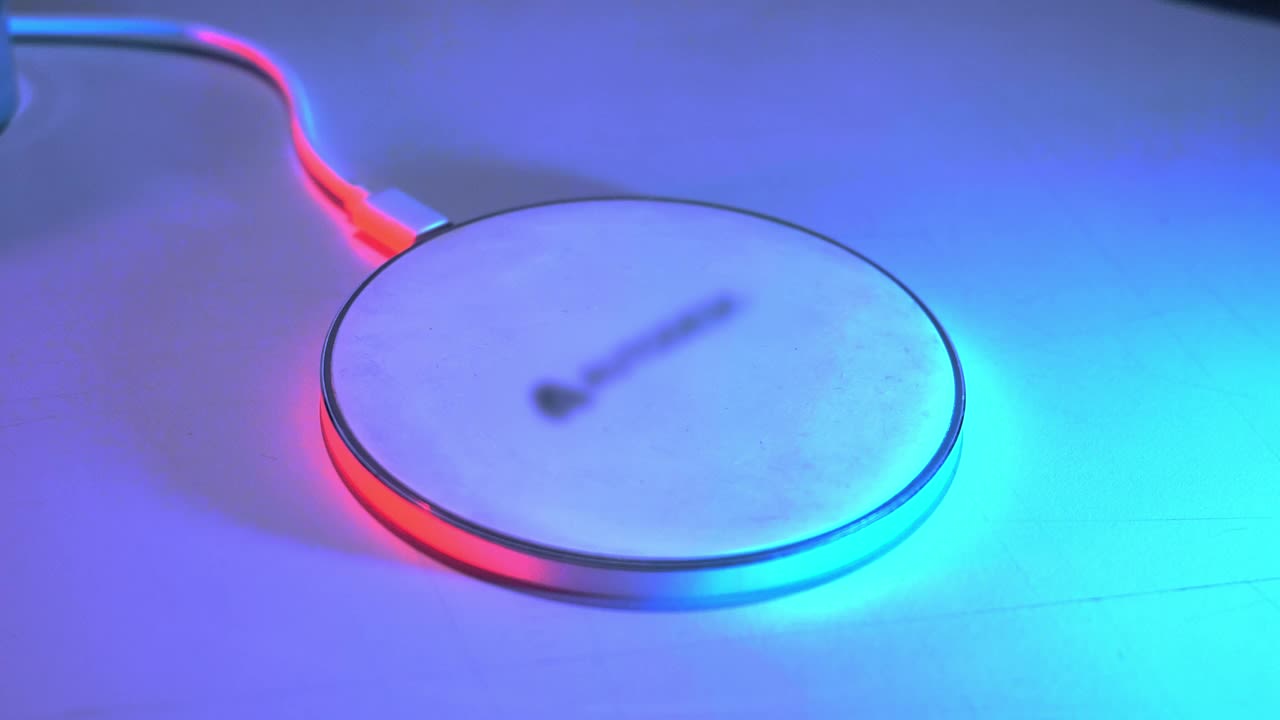
The Qi standard, established by the Wireless Power Consortium (WPC), has become a crucial technology in wireless charging. Pronounced as "chee," Qi is a universally recognized standard that enables power transfer between devices without the need for physical connectors or cables. This technology has gained widespread adoption in various electronic devices, ranging from smartphones and smartwatches to electric toothbrushes, furniture, and vehicles with built-in charging capabilities. The Qi standard is significant for simplifying and improving the charging experience by eliminating tangled cables and providing a seamless and efficient way to power electronic devices. This not only enhances user convenience but also contributes to a clutter-free environment.
Despite the advantages of Qi (v1.0-v1.3) wireless charging, it only works efficiently when the two copper wires are very close to each other, and the transfer rate decreases if not appropriately aligned. Even though most smartphones are Qi-compliant, only 29% of individuals use wireless charging today. This percentage is relatively modest, especially considering the longstanding availability of the Qi technology. To address this problem, the market has high hopes for the new Qi v2.0 standard released in November 2023. It uses magnets to automatically position the phone and charger optimally, improving efficiency and potentially increasing charging speed. Qi v2.0 consists of two profiles: the Magnetic Power Profile (MPP) based on MagSafe technology contributed by Apple, and an enhanced version of the existing wireless charging Extended Power Profile (EPP) that complies with the Qi v2.0 standard but doesn’t use magnets.
The use cases for the Qi standard technology are extensive and continually expanding. As more devices incorporate Qi technology, there is a growing demand for compatible charging infrastructure in the form of charging pads, mats, and embedded solutions in furniture and vehicles. Industries such as automotive, healthcare, and hospitality are increasingly integrating Qi charging capabilities to meet evolving consumer needs. Additionally, the global emphasis on sustainable and eco-friendly technologies has further driven the adoption of wireless charging, aligning with the Qi standard's efficiency and versatility. This makes it an attractive choice for both consumers and businesses.
Qi Market Opportunity

The global wireless charging market was valued at USD 22.17 billion in 2022, with an anticipated compound annual growth rate (CAGR) of 25.8% from 2023 to 2030. The Wireless Power Consortium, as of the end of 2023, certified over 9,000 Qi products, including smartphones, car chargers, wireless charging pads, and LED devices, and was expected to report 1 billion Qi-compliant products sold.
The widespread adoption of Qi makes it a lucrative market for owners of standard essential patents (SEPs), which any implementer of the Qi standard must license. In January 2020, the Via LA patent pool administrator announced a license for patents essential to the Qi standard, providing a one-stop access point for wireless charging and power transfer. The pool reduces the need to engage in separate discussions with any of the pool licensors. Via LA has attracted many of the largest Qi SEP owners including in alphabetical order: Canon, ConvenientPower, GE, Hyundai Mobis, Intel Corporation, Philips, LG Innotek, Panasonic, Robert Bosch, Siemens and WiTricity. All pool members have published lists of Qi standards SEPs on the Via LA website. Under the patent pool license contract, these SEP owners commit to license all SEPs for an aggregated pool rate between $0.2 to $0.85 cents per Qi standard-compliant product (receivers and transmitters). With approximately one billion Qi-compliant devices sold in 2023, the total SEP royalty market can be estimated between $200 million to $850 million when only considering Via LA SEP licensors. Since not all Qi SEP holders are patent pool members, the total royalty market is expected to surpass the 1 billion dollar mark.
SEP Licensing for Qi

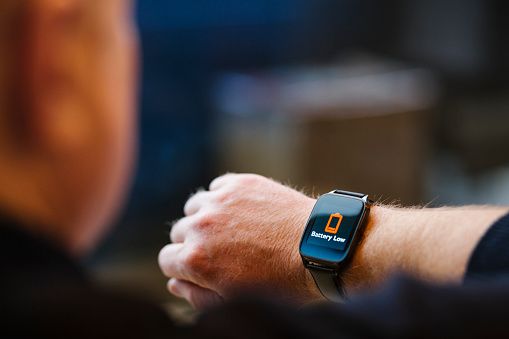
When licensing standard essential patents (SEPs), the SEP licensor and standard implementer, also known as the SEP licensee, go through two phases of negotiation. The first phase is the technical phase, followed by the commercial discussion.
In the technical phase, the SEP licensor must provide evidence that at least one patent of its portfolio is valid and standard essential.
The commercial discussion is much more complex. Here the SEP owner must provide evidence of the value and SEP portfolio share of the stack of all Qi standard SEPs. Identifying the Qi patent portfolio shares requires assessing both the patent owner’s Qi patent portfolio (numerator) and the overall number of Qi patents (denominator).
For some standards like 3G/4G/5G, there are public databases listing all the potentially essential patents. But for the Qi wireless charging standard, many companies' patent portfolios are not public.
For the Via LA pool patents in the pool are pre-screened for essentiality by independent patent reviewers. Via LA pool members have publicly shared their verified Qi SEPs and the company Powermat has publicly declared its Qi patents. However, there is no public patent declaration database. Utilizing the LexisNexis® IPlyticsTM Qi patent landscape, the estimation is that Via LA pool members represent around 26-36%* of the total stack of all Qi patents. In other words, 64-74% of the Qi patents are outside the pool, and Qi patent portfolios are not public. This creates challenges for both Qi patent licensors and patent pools as well as Qi standard implementers.
*The Via LA share of the stack of Qi patents was estimated by using the IPlytics Qi patent landscape. Here only the top 50 ultimate owners of Qi patents were considered. The Via LA shares change when refining the data counting only certain jurisdictions or when applying the Patent Asset Index value metric.
Qi Leaders

Table 1 illustrates the top Qi standard patent owners sorted by the number of Qi patent families (as to the INPADOC patent family definition) where at least one family counterpart was granted and active in at least one worldwide jurisdiction. Among the top patent owners are Samsung, Apple, Canon, LG Electronics, Panasonic, Philips, LG Innotek, and Qualcomm. Counting Qi active and granted patent families and multiplying the Patent Asset Index, a score that uses a patent’s forward citation and a patent family’s market coverage to indicate a patent’s value, shows highest shares for Philips followed by Qualcomm, Samsung, Apple and Sony. It is worth noting that half (6) of the top 12 patent owners reflected in the full list are licensors to the Via LA Qi pool.
The Qi technology landscape provides a starting point for both SEP licensors and SEP licensees to enter a commercial discussion about a Qi patent portfolio. The SEP royalty market is lucrative and sharply increasing. Looking at the Qi patent owners by region of HQ shows that Japanese Qi patent owners lead with about 23.98% market share, closely followed by South Korean patent owners with a market share of 23.00% and US companies with a market share of 21.71%. Qi patent owners from China's mainland yet only represents 6.74% of the market, companies based in Taiwan 2.1%, and German companies 1.93%.
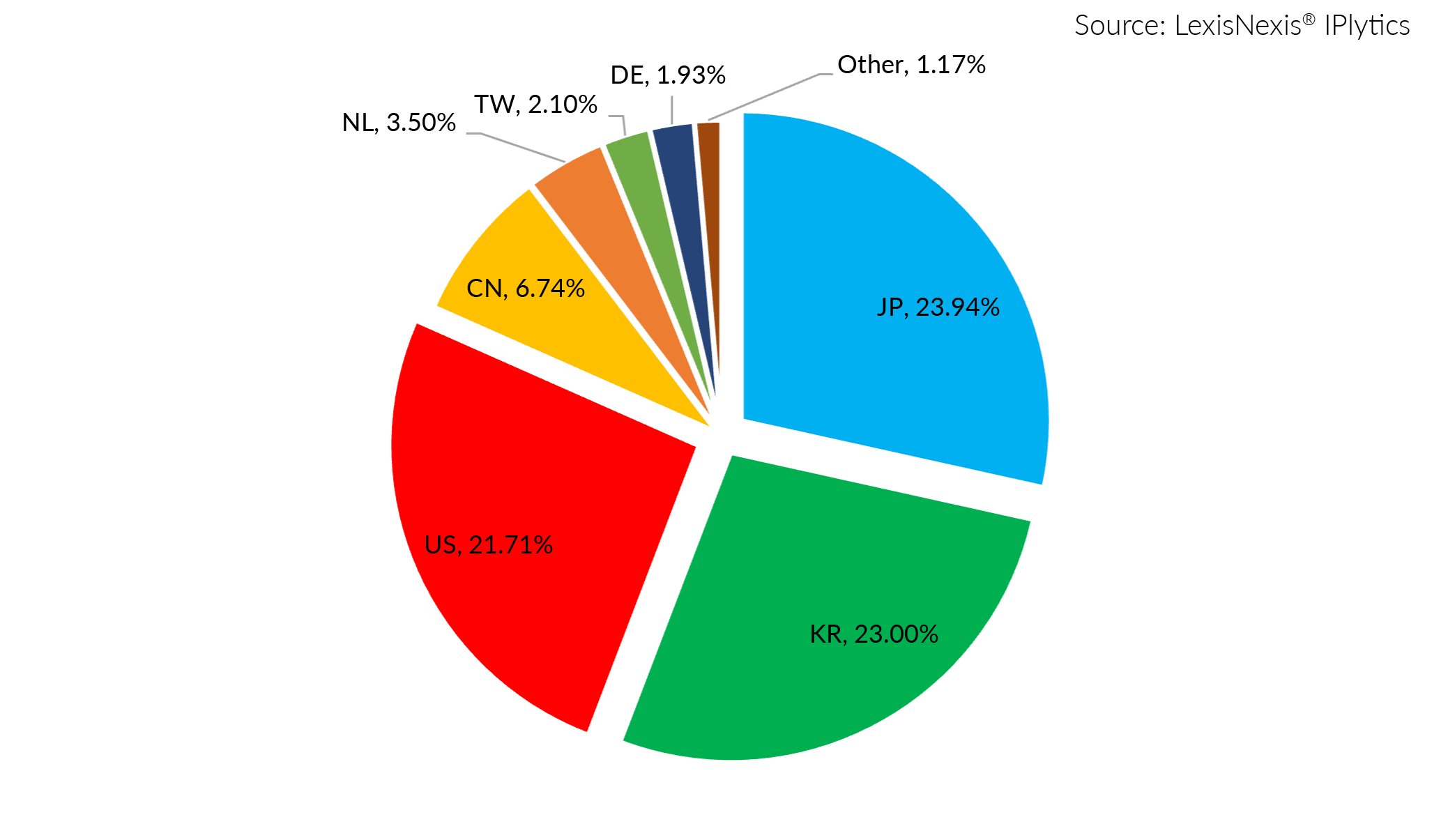
Figure 2: Qi standard SEP licensors by Qi-related family share and by region of HQ.
The LexisNexis team analyzed about 9,000 Qi-certified products listed on the Wireless Power Consortium (WPC) website to find out which companies implement the Qi standard. They discovered 1,891 companies that have at least one product that is Qi-certified. When a product is compliant with the Qi standard, it needs to license all the Qi standard essential patents. This list of Qi-compliant products was, however, not verified by any third party. Many of the listed companies seem to be small manufacturers from emerging markets. Via LA lists 39 licensees, and the licensee base is growing rapidly. However, it is worth noting that out of the 1,891 listed Qi manufacturers only 39 companies are Via LA pool licensees. One of the reasons why this is the case could be because Via LA pool waives the first 25,000 units of all products sold annually, and many of the listed manufacturers are small product manufacturers with production units below 10,000 units. Based on Via’s own database and industry expertise, Via LA has stated that they can reasonably identify only about 100+ “real” companies, meaning companies that have identifiable information such as name, possible location and corresponding certified WPC product. However, there is no doubt the market is rapidly growing, and more and more small, medium-sized manufacturers will enter the market for Qi-certified products. Additionally, Via LA states on its website that certain medical devices or power tools are exempt from royalties. Despite this, large companies such as Samsung Electronics, Huawei, Apple, or LG Electronics that sell millions of Qi-certified products each year are yet to become pool members.
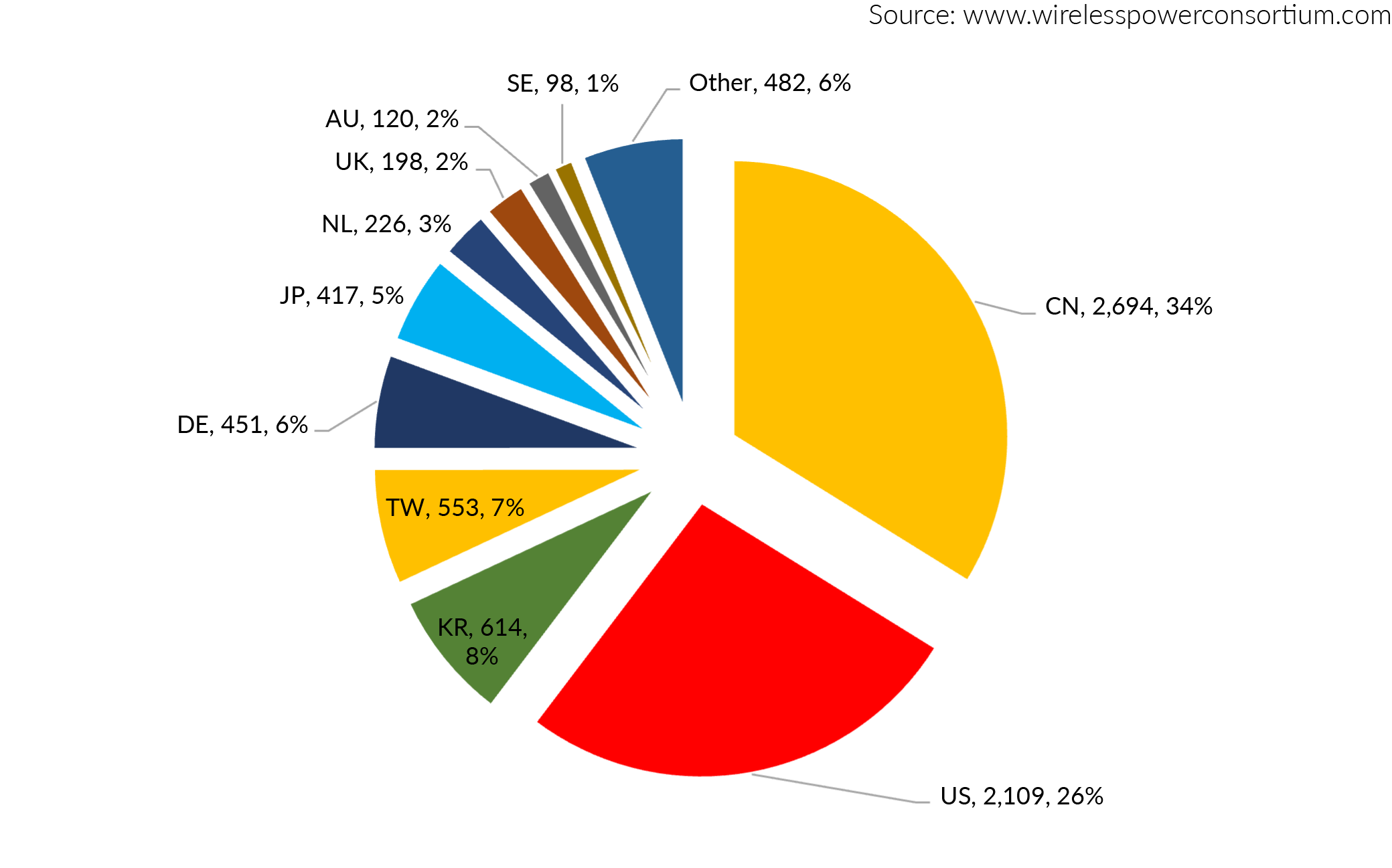
Figure 3: Qi standard certified products by region of product company HQ.
Via-LA states that they expect other significant Qi-standard implementers and patent owners will join the pool in the near future. Royalty rates are set the same for similarly situated licensees (e.g., handset manufacturers), and remain the same as new licensors and patents join the pool. In other words, Via LA has built-in protection against royalty stacking.
While the Qi standard patent licensor market is dominated by Japanese and Korean companies, the Qi implementer market shows a different picture. Here, Chinese manufacturers represent 34% of the Qi product market with 2,694 Qi-certified products, followed by US manufacturers with 2,109 products representing 26% of the market (Figure 3).
With one billion Qi products sold in 2023, the market for licensing Qi SEPs seems to have a huge royalty income potential but SEP licensing for the Qi technology seems still at the beginning. Here, it appears that SEP owners are still waiting and observing the market to ensure wider adoption of Qi and stronger usage to replace charging cables fully. With the release of Qi 2.0 and its expected increase in product adoption, the usage of wireless charging is likely to expand. This could trigger the Qi SEP licensing market to take off over the next 1-2 years.
Unlocking Value Through Actionable Patent Insights

Qi Standard SEP Licensors
Only 26-36% of Qi patents are publicly disclosed. However, a comprehensive Qi patent landscape is critical for successful SEP licensing. IPlytics’ Qi patent landscape reveals related patents not listed publicly.
This enables portfolio managers to:
- Identify strengths/weaknesses of their portfolio
- Benchmark against competitors
- Make informed decisions on portfolio development
Licensing departments use the landscape to:
- Filter out irrelevant patents in portfolios
- Focus resources on valuable, licensable patents
- Monitor market and ownership changes
With over 9,000 Qi-compliant products, the royalty potential is substantial. Qi patent owners should actively monetize portfolios. A complete landscape is key to capitalizing on this opportunity.
Qi Standard SEP Licensees
Manufacturers of Qi-compliant products should prepare for patent holders and pools to soon request royalties. Analyzing the Qi patent landscape is an essential first step to getting ready for fair, reasonable, and non-discriminatory (FRAND) licensing negotiations.
Mapping out the numerators and denominators enables determining individual patent holders’ and pools’ share of all relevant Qi patents. With this data, manufacturers can compare licensing offers and assess the relative value of different patent portfolios.
Monitoring Qi patent filing and ownership trends also helps quantify risks and forecast future royalty expenses. This includes tracking activity from patent assertion entities acquiring Qi patents.
In summary, a comprehensive understanding of the Qi patent landscape obtained through analytics arms manufacturers with information to negotiate effectively on royalties and plan their IP budgets.
Key Considerations

It is expected that the Qi standard technology will become one of the most important standards to enable cordless charging for smartphones and tablets and in cars, offices, or any surface where users may place their devices. The Qi standard is subject to increasing patents that must be licensed when products implement the Qi technology. IP professionals, as well as patent licensing executives, should bear in mind some key considerations:
- Future technologies will increasingly rely on patented technology standards such as the Qi standard.
- IP professionals must consider working with Qi patent data as a starting point to understand the total stack of Qi patents and the share of the portfolios of Qi patent owners.
- IP decision makers should consider the dynamic market changes, where patent assertion entities often acquire patent portfolios to assert extensive royalty payments.
- IP professionals need to be aware that while the market for wireless charging standards is fairly new, it is now time to be thinking about what the businesses will need two, five and 10 years in the future, and hand in hand with that, what patent portfolios will need to support that. Be proactive, not reactive. Do not get left behind.
View the complete list of Qi Leaders
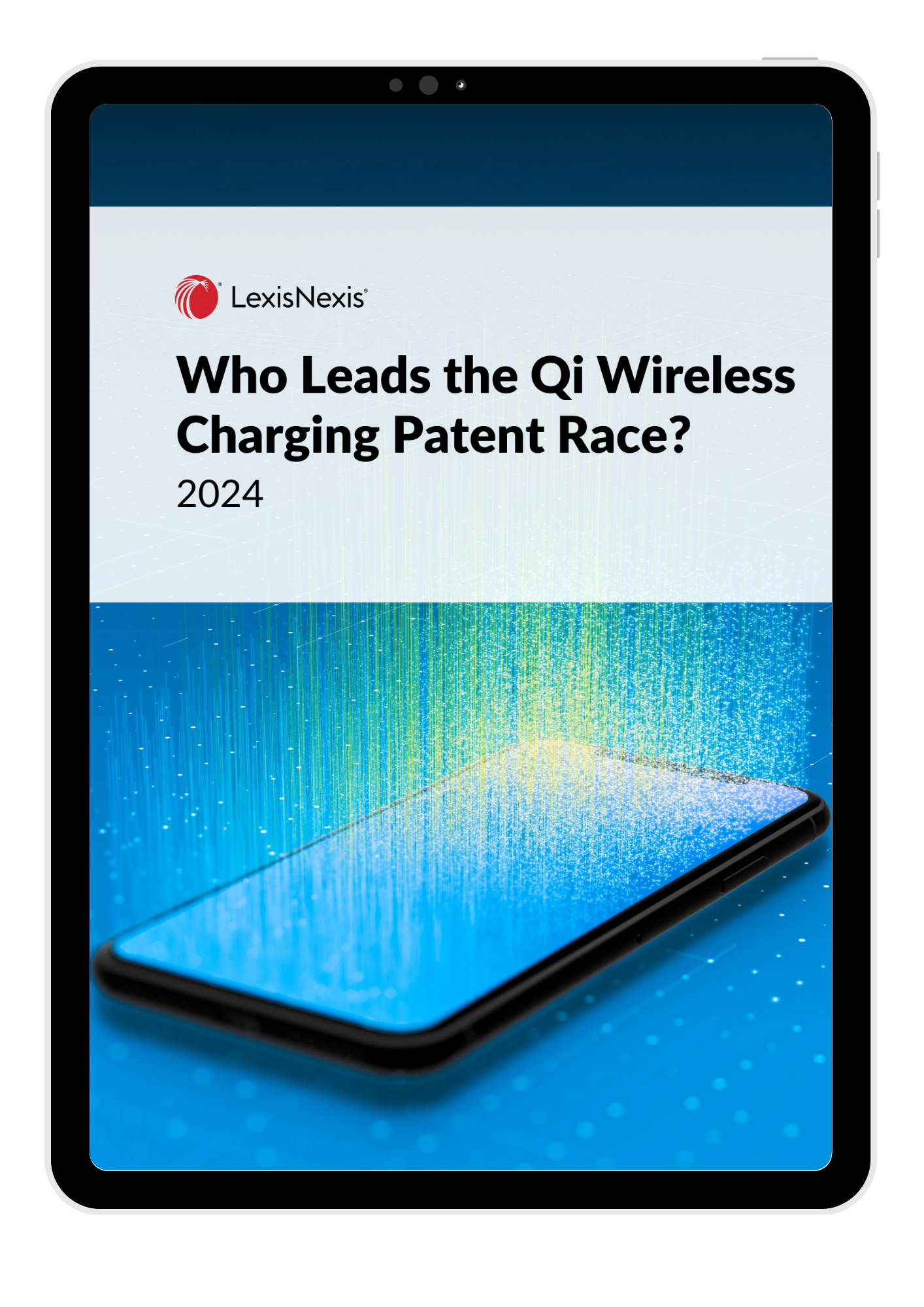
About the Authors

Tim Pohlmann is the CEO and founder of LexisNexis® IPlytics. He earned his doctoral degree with the highest distinction from the Berlin Institute of Technology, with a dissertation on patenting and coordination in standardization. He then went on to work as a post-doctoral researcher and consultant for the Law and Economics of Patents Group at CERNA, MINES ParisTech. In 2014 he founded IPlytics with the vision to overcome friction and complexity in data-led decisions in industries where standards and patents matter by being the transparent, accessible source of wisdom for all IP professionals. Tim has been actively involved in preparing empirical studies for the European Commission, the World Intellectual Property Organization and the German federal government on declared patents, standards contributions, patent transfers and patent pooling. He is a recognized thought leader, panel speaker and adjunct lecturer on the topics of Standard Essential Patents (SEPs), FRAND licensing, patent pools and advanced patent intelligence. He was again recognized in the IAM Strategy 300 Global Leaders list 2023 and is author of several peer-reviewed economist journal articles, several Managing IP articles, IPWatchdog articles, IAM Magazine articles, and some of the most-read IAM Media industry reports.

Tim Pohlmann , CEO and Founder, LexisNexis® IPlytics

Magnus Buggenhagen, Consulting and Strategy, LexisNexis® IPlytics
Magnus Buggenhagen is a senior consultant and manager with expertise in patent analytics, standard essential patents, and standardization. His expertise has been honed through years of dedicated work, collaborating with prominent global enterprises to unravel the intricacies of patent landscapes and portfolios. His in-depth knowledge of standard essential technologies, combined with his holistic approach to patent evaluation, has positioned him as a go-to consultant for leading industry players seeking effective patent and standardization strategies, portfolio management, and informed decision-making. Magnus has an economics background focused on innovation, standardization, and experience in the consultancy and venture capital industry


